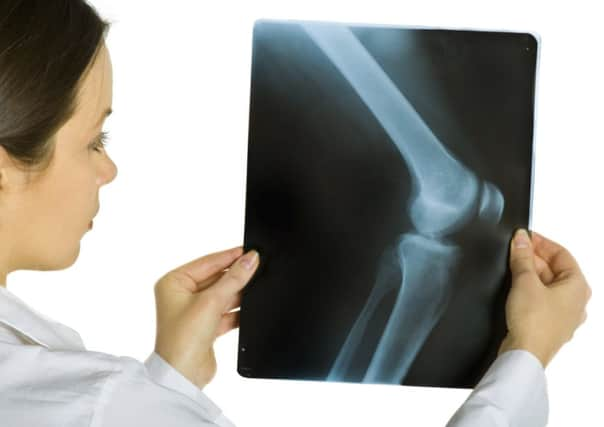Breakthrough cuts need for knee surgery


The computerised method will improve the success of replacements and prevent costly and unnecessary revisions to existing implants, according to researchers.
Modern knee replacement is a highly successful method of relieving the pain and disability of knee osteoarthitis, which usually affects those aged over 40.
Advertisement
Hide AdAdvertisement
Hide AdStudies suggest that almost one in two people will suffer from symptomatic osteoarthritis – the degeneration of joint cartilage and underlying bone – of the knee during their lifetime.
More than 90,000 knee replacements are performed in the UK each year, but this figure is expected to rise by more than 600 per cent by 2030 due to an ageing population, obesity and younger people having the surgery.
Patients often require a second knee replacement or “revision”, which can cost up to four times as much as the original surgery, as well as bringing increased risk of infection and failure.
Researchers at the University of Bath have developed a semi-automated computer program to assess the condition of a knee replacement, a task usually performed visually by surgeons. The technique gives an independent score for radiolucency, which is the region surrounding a hip or knee replacement which is dark on an X-ray and can progressively worsen with loosening.
Richie Gill, professor of Healthcare Engineering at the university, said the program would provide a more accurate, independent method to assess the need for a revision.
“Until we did the work that we did all radiolucency lines were looked at by eye by the surgeons,” Professor Gill said.
“As well as developing the technique, we looked at what the repeatability between surgeons was when looking at radiolucency.
“What was interesting to us was the lack of agreement between different surgeons looking at the X-rays.
Advertisement
Hide AdAdvertisement
Hide Ad“Surgeons are given limited guidance of how to define radiolucency and use different assessment criteria which explains the wide and concerning variation found in the surgical assessments in this study.
“Using a digital computerised tool that accurately identifies patients with progressive pathological radiolucency, showing severely loosening knee replacements, would ensure correct surgical procedures are applied.
“This will improve patient outcomes and save money spent on operations which may not ultimately be successful.”
Prof Gill added that there is a “rapid rise” in the number of knee replacements in the UK, with an increase of 7 per cent in the past year.
The semi-automated computer program developed by the researchers could be run by an unskilled user, to provide a more reliable radiolucency score.
In the study, researchers analysed six surgeons’ assessments of radiolucency in 38 unicompartmental knee replacement radiographs.
The results were then compared with assessments made by the computer program, a semi-automated imaging algorithm.
Large variation was found between the surgeons’ results, with total agreement in less than 10 per cent of zones, compared to 81.6 per cent in those of the program’s.
‘A semi-automated measurement technique for the assessment of radiolucency’ is published in the Journal of the Royal Society.